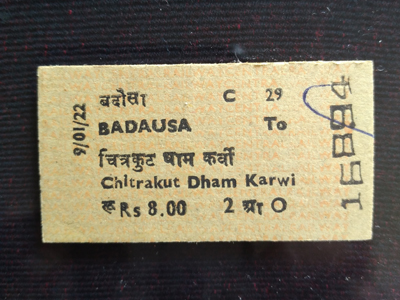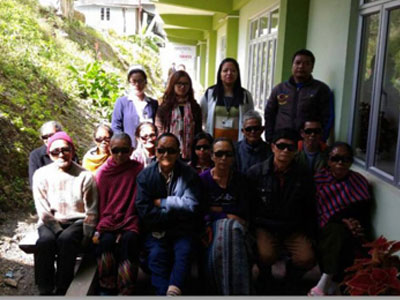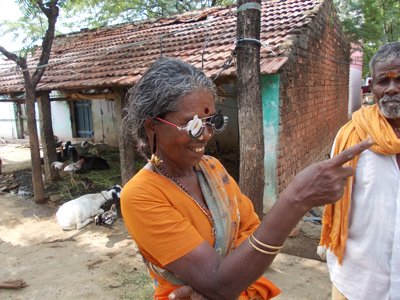Eye Care Without Any Hitches
Created By: Amit Mondal

Geographically, Arunachal Pradesh is bounded by Bhutan to the west, China to the north and Myanmar to the east. It also shares inter-state boundary with Assam and Nagaland. As per the 2011 census, the state has a total population of over 1.3 million people with most of its population occupied in agricultural activities. About 68% of the total working population is engaged in agricultural and other related activities. With very few exceptions, the people of this very state mostly practice jhum (shifting cultivation) on the hill slopes. This practice is rooted in their culture and traditions. In other words, we can also say that Arunachal Pradesh is predominantly a “Tribal State” with 26 major tribes and more than 100 sub-tribes with their own dialects. The state is further divided into 25 districts and Itanagar is the state capital.
A study was commissioned by Vision 2020: The Right to Sight-India in the year 2016, which revealed that the eye care services in the state is governed and supported by the National Programme for Control of Blindness and Visual Impairment (NPCB & VI). The eye care services are provided by 14 ophthalmologists covering 6 districts and 36 Paramedical Ophthalmic Assistants (PMOAs) covering 14 districts. Presently, in Arunachal Pradesh there are many non-profit organisations who are collaborating with state ministries lending financial and programme specific support in order to develop the eye sector in a robust manner. For instance, Mission for Vision (MFV), Ramakrishna Mission Hospital (RKMH) and Karuna Trust are engaged in activities to assess the actual impact on control of blindness in the state.
Let us look at factors that are limiting the delivery of eye health services in Arunachal Pradesh.

Scattered density of population: Arunachal Pradesh has a total of 25 districts with each district in a strategic location. Some of these districts have an inaccessible terrain and some have extreme weather conditions. The distance between districts is another challenge that bothers the eye health personnel. Travelling from one district to another is no easy task. In order to ensure timely delivery of services, MFV and its partners engaged local ASHA workers by training and developing a plan for sustained referral of eye health needs in the community. The plan also extended interventions with school children by offering subsequent support like timely eye-screening, distribution of spectacles and focusing on referral needs.
Connectivity and poor economy: Lack of good transportation remains one of the major hurdles which hamper the delivery of the required eye services to the needy people of this region. The road is so bad that even riding a two wheeler can be a challenge. Poverty is another issue that is prevalent in this region and they usually depend on foraging or use the natural resources to survive. Considering such a situation, health and eye care is always on the backburner for these communities. MFV and its partner hospital (RKMH) identified these barriers to eye health services and reached the locations with local eye screening camps. The team provided timely screening and spectacles to those who needed them. Individuals with operable cataract were provided free transport to the base hospital. This is followed by nutritious meals, hospital accommodation, surgery, medicines and transportation back to their own village which is provided at no cost to the patient.
The eye health infrastructure: The geographically remote state of Arunachal Pradesh has the second highest blindness prevalence rate in the country as per 2003 RAAB survey (Rapid Assessment of avoidable blindness survey). This is about 2.28% and cataract is the main cause of blindness. As per situation analysis report by Vision 2020 India, in the year 2016, the state has 11 facilities for eye surgery that covers 8 districts in the state. In some districts, the villages do not have access to the district hospital, in terms of availability of public transportation within and inter districts are very limited that does not connect all villages. There is not a single dedicated eye hospital in this region to serve the eye-care needs of the communities. In recent times, MFV initiated a community eye care project (CEHP) in collaboration with The National Programme for Control of Blindness and Visual Impairment (NPCB&VI) in West Siang district of Arunachal Pradesh. This CEH project will combat avoidable blindness in this district.

Mission for Vision extended its eye health services to the people of this particular state in partnership with the Rama Krishna Mission Hospital based in Itanagar. MFV is supporting the partner hospital in optimising all allied activities to reduce the backlogs of cataract blindness in the region. The partnership also aims to create greater awareness among the target groups by engaging local volunteers, who reach out to the scattered population and bridge the gap effectively. Apart from the networking and linkages with local community based organisations, Mission for Vision has also been receiving incredible support from the NPCB&VI which has helped immensely in addressing the issue of preventable blindness in the state of Arunachal Pradesh.
About the Author: Amit Mondal leads programme impact efforts at Mission for Vision in east and northeast regions of India. He plays a key role in project evaluation, impact assessment, implementation of research projects, assessment of programme deliverables and management of impact assessment team.
SHARE NOW:
RELATED ARTICLES

A Special Railway Ticket
Guest author Dr. Sil shares his memorable journey of visiting Sadguru Netra Chikitsalaya in Chitrakoot, Madhya Pradesh
Read More
No Compromise on Quality
Here is a story that reiterates the importance of maintaining the highest quality standards when it comes to delivering eye care.
Read More
Roots of Mission for Vision
Lijiraj revisits the books of history and shares with us how Mission for Vision came into existence.
Read More